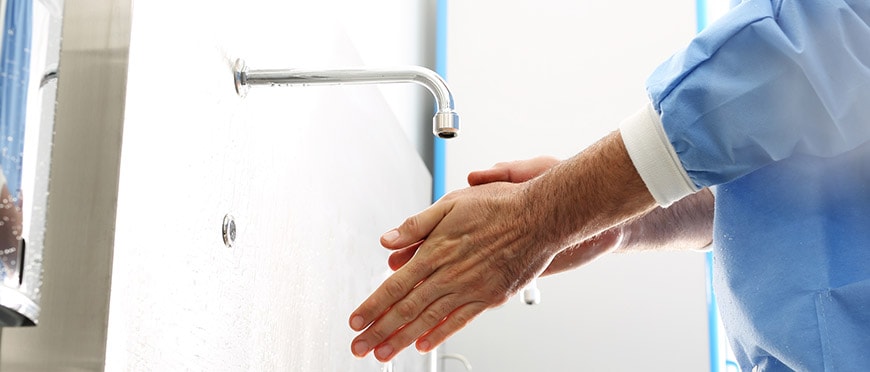When disaster strikes, hygiene means more than just washing your hands with soap and water for 20 seconds. It also means maintaining cleanliness and preventing infectious outbreaks and sickness in affected areas and evacuation centers.
According to the Centers for Disease Control (CDC), there are a variety of factors health care providers and officials need to consider when helping hand washing and hygiene be more effective in a disaster situation.
- Provide safe, clean water and soap
- Use alcohol-based sanitizers
In the event clean water and soap isn’t available right away, a safe alternative to hand hygiene is alcohol-based sanitizers or products1. It is important to use at least 1 mL and rub the sanitizer over all parts of the hands until they are dry in order for it to be effective1. Keep in mind, while alcohol-based hand sanitizers act fast and can significantly reduce the spread of germs and bacteria, they do not necessarily eliminate all kinds of germs1.
- Install hands-free paper towel dispensers
Following a good hand wash, it is critical to dry clean hands with a paper towel that is not contaminated. While there are many options for hands-free towel dispensers, Tork dispensers are known for their signature one-at-a-time, hands-free dispensing, so users only touch what they take. Using touch-free systems avoids the spread of germs and keeps disaster victims safe from further harm.
- Communicate the importance of hand hygiene
People displaced or affected by a disaster situation may not think about hand hygiene as much as their future and well-being. Therefore, it is up to health care officials and providers to think of everything from clean water access to hand washing and more, that will keep these victims safe from viruses, infections and further disaster. It is also in their best interest to immediately begin displaying hand hygiene signage and messaging throughout evacuation centers to serve as a constant reminder of everyone’s responsibility during the disaster. For signage that stands out and can make an impact, visit http://torkhealthyhands.com to create your own effective hand hygiene posters2.
- Promote dental hygiene
Oral diseases can also affect a disaster situation. So it’s best to encourage brushing teeth with clean water, because unsafe water can further perpetuate a bad situation. The CDC suggests listening to local authorities for information about the safety of tap water and to follow through accordingly1. In fact, when preparing for a natural disaster or emergency, the Federal Emergency Management Agency (FEMA) recommends having up to a gallon of bottled water per person ready to go in the event tap water becomes unsafe for victims3.
While hand washing is a must in an emergency situation, clean water may not always be readily available. So disaster victims are asked to listen to government officials or the local authorities for ways to access clean water so they can avoid getting sick and spreading germs and bacteria in an already precarious situation1. In the meantime, it is important for healthcare officials to set up stations that can offer clean water and soap, so evacuees or victims can have access to the basic necessities they need to keep them from safe and healthy during this time of displacement1.
Sources:
1 Centers for Disease Control and Prevention (2015), Personal Hygiene and Handwashing After a Disaster or Emergency. Retrieved from: http://emergency.cdc.gov/disasters/floods/sanitation.asp
2 Tork, (2016), Clean Hands Are Healthy Hands. Retrieved from: http://torkhealthyhands.com/create/
3 International Bottled Water Association (2014), During Emergencies Or Natural Disasters, Water Is Always There When You Need It. Retrieved from: http://www.bottledwater.org/during-emergencies-or-natural-disasters-bottled-water-always-there-when-you-need-it
